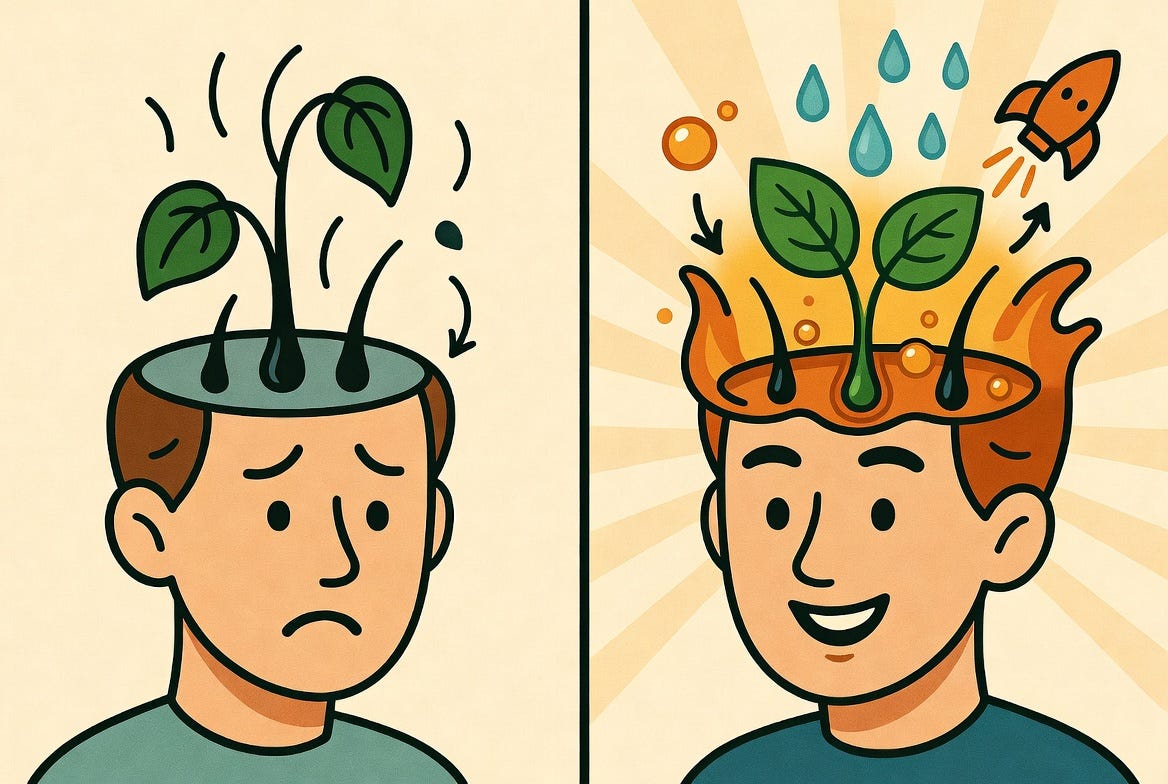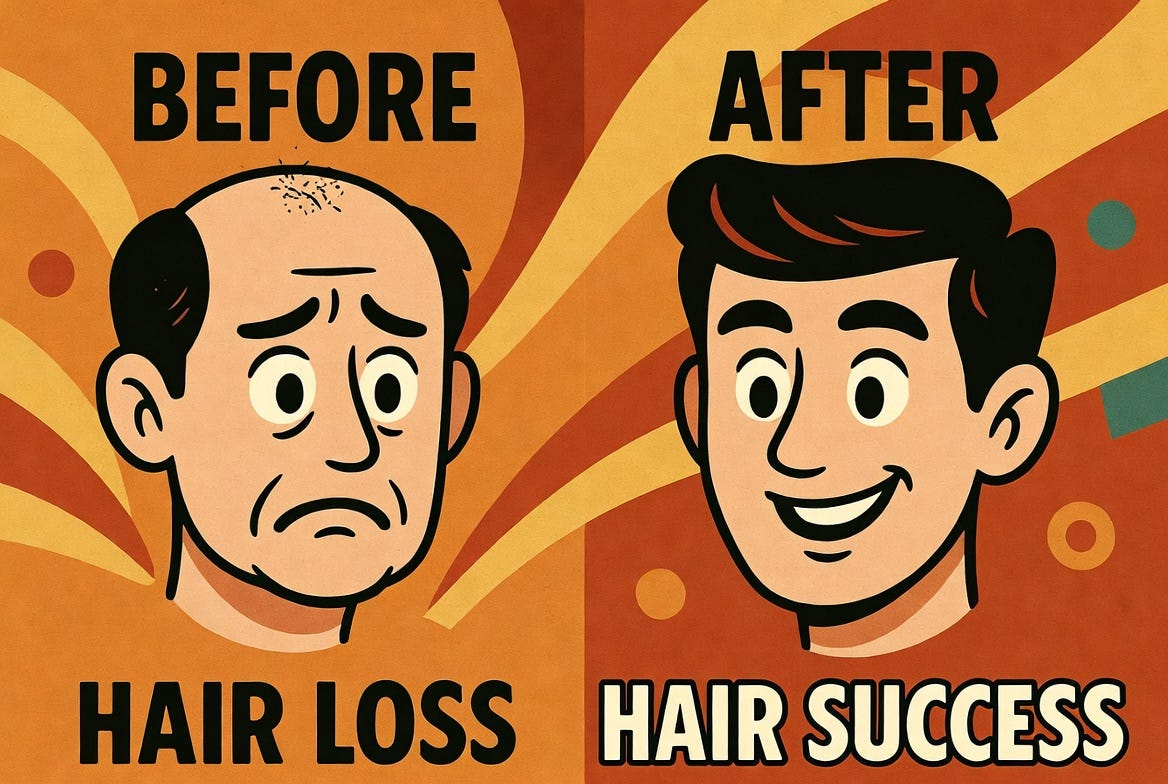Centella Asiatica Hair Growth Breakthrough: Plant Exosomes + Long-Acting Growth Factors Actually Deliver
A 56-day human trial just dropped showing meaningful gains in hair density, thickness, length, and reduced shedding—without minoxidil or finasteride.
I’ve spent the last year trying everything for the thinning spot on my crown (scalp massages, red-light caps, rosemary oil, the works). Nothing gave me visible progress I could measure. So when a properly blinded, placebo-controlled trial lands with before-and-after numbers that beat the usual suspects, I pay attention.
“The formulation combining Centella asiatica extracellular vesicles with long-acting IGF-1 and FGF-7 outperformed every other group — including caffeine + panthenol alone and growth factors alone — by Day 56.”
What They Actually Tested
Sixty healthy adults (mostly women, average age ~36) got split into five groups of twelve. Everyone applied 1 mL of their assigned essence once nightly for eight weeks. The products looked and smelled identical—solid blinding.
The five arms:
Group A → Pure placebo (no actives)
Group B → Base formula: 0.1 % caffeine + panthenol (think Alpecin/Plantur level)
Group C → Base + long-acting recombinant IGF-1 + FGF-7 (Fc-fusion proteins so they stick around longer)
Group D → Base + Centella asiatica extracellular vesicles (plant “exosomes”)
Group E → Base + growth factors + Centella EVs (the kitchen-sink version)
They measured everything the hard way: sebum with a Sebumeter, hair length/thickness/density with a 200× digital microscope + AI analysis, and hair loss via a standardized 60-stroke comb test.
What the Data Says
By Day 56 the full combo (Group E) pulled away from everything else:
Hair density ↑ ~18–22 % (vs. ~4–8 % in caffeine-only and placebo)
Hair thickness ↑ ~10–12 µm (statistically significant vs. every other group)
Hair length grew noticeably faster
Shedding dropped ~40–50 % in the comb test (placebo barely budged)
Scalp sebum normalized nicely — not too oily, not too dry
Even more interesting: the growth-factor-only group (C) and the Centella-EV-only group (D) both beat caffeine + panthenol, but combining them gave clear synergy. The researchers think the plant vesicles calm inflammation and improve penetration while the long-acting IGF-1 and FGF-7 keep the follicles in anagen longer.
Why This Feels Different From the Usual Hair-Growth Noise
It’s a randomized, double-blind, placebo-controlled human trial—not mice, not petri dishes, not “we asked 20 people on Instagram.”
They measured real endpoints (density per cm², micron-level thickness, actual shed hairs counted) instead of “please rate your hair fullness 1–10.”
The effect size is big enough that you’d probably notice it in the mirror after two months, especially on the crown or temples.
For context, oral minoxidil studies often show ~10–15% density gains after six to twelve months, with daily pills and possible side effects. This topical hit similar density numbers in half the time with no reported adverse events.
What You Can Do Right Now (and What’s Coming)
You can’t buy this exact formula yet — it’s from Schweitzer Biotech in Taiwan and still pre-commercial—but the ingredients have INCI names and IDs listed in the paper, so cosmetic chemists are almost certainly reverse-engineering it as we speak.
In the meantime, the trial confirms three levers that clearly work:
Topical caffeine + panthenol still beats doing nothing (Group B > placebo).
Growth factors (IGF-1, FGF-7/KGF) move the needle on their own. A few brands already sell shorter-acting versions.
Centella asiatica exosomes look like the sleeper hit. Several Korean and European brands have started putting plant-derived vesicles in serums; hunt for “Centella Asiatica Leaf Vesicles” or similar on the label.
My current stack? I just added a Centella exosome serum to my evening routine and I’m keeping the red-light cap—if this combo is synergistic, stacking the pieces we already have access to makes sense while we wait for the full recipe.
What’s Next on the Horizon
The authors hint this is just the opening act. Plant EVs can carry miRNAs, lipids, and secondary metabolites across the skin barrier far better than plain botanicals. Pairing them with Fc-fusion proteins (same trick used in long-acting drugs like dulaglutide) feels like a platform technology—hair today, skin repair or wound healing tomorrow.
Larger trials are obviously needed, especially in men with classic androgenetic alopecia and longer follow-up to see if the gains hold after you stop. But for once we have a topical that produced objective, photographed, statistically significant results in only eight weeks.
Safety Notes and Reality Check
No side effects were reported in the 60 participants, but it’s still a preprint (not yet peer-reviewed) and the sample is small and fairly young. If you have scalp psoriasis, open wounds, or are on finasteride/dutasteride, talk to a dermatologist before piling on new actives.
One Last Thing
Hair loss creeps up slowly, so most people wait until it’s obvious before doing anything serious. This study is a reminder that safe, measurable options are finally starting to appear—and they don’t all require a prescription or daily pills.
Explore the Full Study
“A 56-Day Randomized, Double-Blinded, and Placebo-Controlled Clinical Assessment of Scalp Health and Hair Growth Parameters with a Centella asiatica Extracellular Vesicle and Growth Factor-Based Essence”
Tsong-Min Chang, Chung-Chin Wu, Huey-Chun Huang, et al.
medRxiv preprint · doi: 10.1101/2025.09.10.25335404



